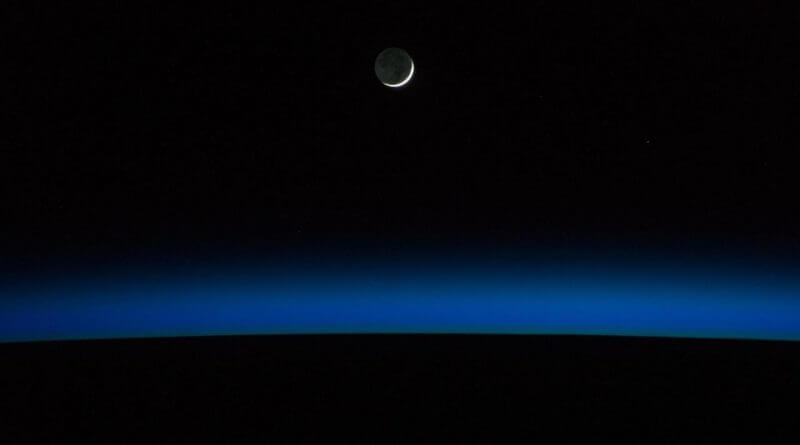Space Is The Place: The Night Sky Over Belper, May 2020
In the Night Sky Over Belper, May’s highlights include: A bright full Moon on the 7th. Venus is in its crescent phase. Comet SWAN (maybe).
COVID 19.
For most of us astronomy is an outdoors pastime and often involves travelling to dark sites, star parties, observing sessions and evening meetings. Obviously none of this is possible during this period of lockdown. Government guidelines advise no unnecessary travel and social distancing.
Please follow the spirit of the government guidelines in pursuit of your hobby. Keep safe and respect the safety of others.
The Starlink satellites.
There has been a lot of publicity in relation to the Starlink satellites and some people have been lucky enough to see them proceeding “in train”. Space is the Place has highlighted the phenomena of the Starlink satellites in previous columns. (See January, February and March 2020).
Starlink aims to provide very fast broadband connections with global coverage – a potentially lucrative endeavour. I have made some comments on the possible problems for astronomers as more of these satellites are launched by Elon Musk’s SpaceX company. My general feeling is that we are witnessing the beginning of the industrialisation of space – with all that implies.
If your interest in satellites has been piqued, I have written previously about satellite tracking, the tools needed and what to look for here: Satellites are Spinning.
Satellite trackers like Heaven’s Above (they also have a mobile app) are now showing a constant stream of Starlink satellites in orbit. Over 400 Starlink satellites have been launched since 2019 – with more launches being scheduled at regular intervals.
If you are interested in spotting Starlink satellites, note that the best time to view any satellite is generally a couple of hours after darkness falls – or a couple of hours before dawn. This is because the visibility of a satellite is dependent upon reflected sunlight, either sunlight reflecting off the body of the satellite or its solar panels.
The best time to spot the Starlink satellites in procession is shortly after they have been launched. The website Spaceflight Now provides a regularly updated timetable of launch events. The next sheduled launch (Starlink 7) is on the 18th of May.
There is more information about the Starlink project from the company website here: Starlink.com.
Comet Hunting:
Comet (ATLAS)
Big things were expected of Comet C/2019 Y4 (ATLAS) as it was predicted to reach naked eye visibility in May. Unfortunately the comet fragmented on the 5th of April and, as a consequence, its visibility has faded significantly.
Comet C/2020 F8 (SWAN)
There is a possibility that Comet SWAN (currently visible in the Southern hemisphere) will reach visibility in the Northern hemisphere after the third week of May.
The comet will appear low down in the north, just above the horizon. The best time to see it will be after midnight in the early hours of the morning (as the sky will be darker then).
The Society of Popular Astronomy have produced more details and a star chart here: Comet C/2020 F8 (SWAN).
The Moon.
There is a bright full Moon on Thursday the 7th of May. This Moon is also a supermoon (the last of the year).
The crescent Moon on Sunday the 24th of May will appear to be close to the planet Venus. Venus will also be in a crescent phase, although you will only be able to see this through a telescope.
The image above is of a crescent moon and the Earth’s horizon, a night-time image photographed by an Expedition 40 crew member on the International Space Station. Courtesy of Nasa Images.
The Planets:
Venus
Venus is shining very brightly in the north-west and is very easy to spot as darkness falls.
This is a good time to look at Venus through a telescope as it is now in its crescent phase. But do it soon as Venus will not be visible in the night sky for much longer, disappearing from view at the end of May.
Mars, Jupiter and Saturn
Mars, Jupiter and Saturn are all early morning objects, hanging low in the sky. Look towards the south-east horizon after 1.00am to see them.
International Space Station.
There are good opportunities to see the space station as follows:
Saturday 16th of May, when it will make a pass of 6 minutes duration starting at 11.39pm (travelling WSW to E).
Sunday 17th of May, making a pass of 6 minutes duration starting at 10.51pm (travelling SW to E).
Monday 18th of May, making two passes of 6 minutes duration starting at 10.03pm (travelling SW to E) and then 11.40pm (travelling WSW to E).
Check Spot the Station for further details and also for sightings after the 18th.
You can also sign up to the NASA Space Station Alerts service which gives advance notifications of sightings.


GDPR, Your Data and Us: https://nailed.community/gdpr-your-data-and-us/